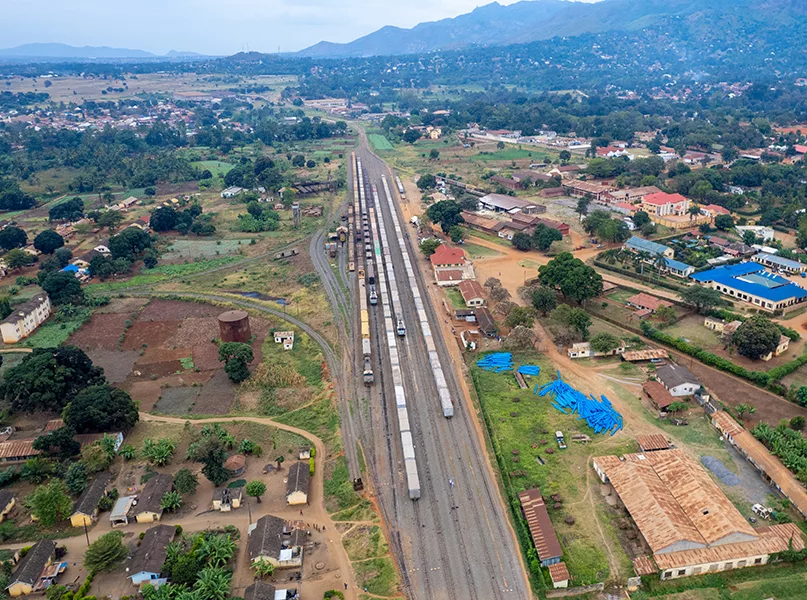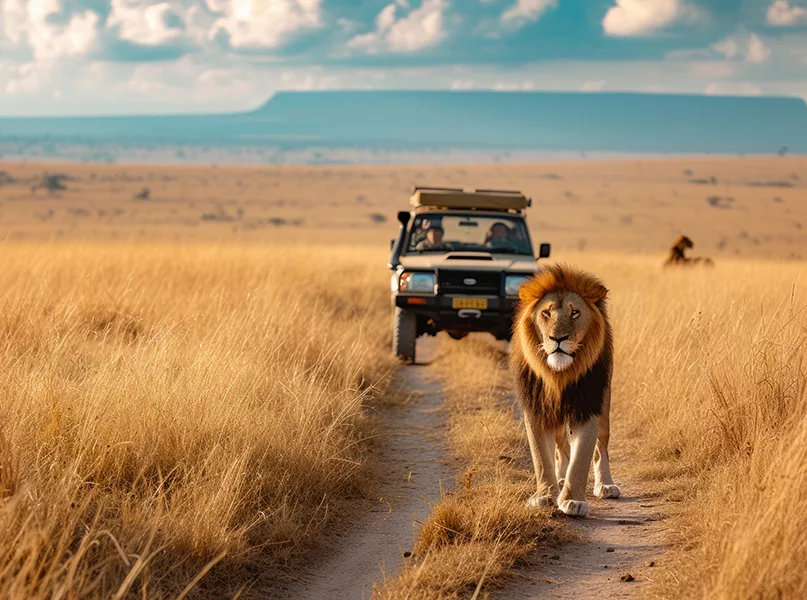Whilst Tanzania boasts three international airports, Kilimanjaro International Airport (JRO) is by far the most popular due to its variety of onward travel options for the popular northern safari circuit, which includes Serengeti National Park, the Ngorongoro Crater, Tarangire National Park, and Lake Manyara.
Alternatively, Julius Nyerere International Airport (DAR) provides a viable option for those who wish to visit Dar es Salaam or the southern circuit, whilst Abeid Amani Karume International Airport (ZNZ) is perfect for those heading to Zanzibar.
Driving into Tanzania is achievable from neighbouring countries such as Kenya, Uganda, Rwanda, and Burundi to the north, and Zambia, Malawi, and Mozambique from the south. The country boasts an extensive network of roads, however, only a small percentage are tarred and well-kept. As such, renting a robust four-wheel-drive vehicle is the most feasible option to explore Tanzania by road.

Within most major cities and towns, dalla dalla (public minibuses), boda boda (motorcycle taxis), and bajaji (tuk-tuks) all present cost-effective options compared to conventional taxi services, which often hike up their prices for tourists. However, these are far from comfortable and potentially dangerous for tourists in more rural areas, whilst timetables are generally unpredictable.
In addition, Tanzania Railways Corporation (TRC) runs frequent train services between popular routes such as Dar es Salaam and Kigoma, Arusha, and Moshi.
Furthermore, the Tanzania-Zambia Railway Authority (TAZARA) runs an express service, however visitors should note that services can be unreliable, and securing a first or second-class ticket at least two days in advance is advisable to guarantee yourself a seat.
Ultimately, booking a private transfer through a reputable agency is the most comfortable and secure travel option for most, whilst agreeing a price online or over the phone ahead of arrival will avoid unexpected costs.































